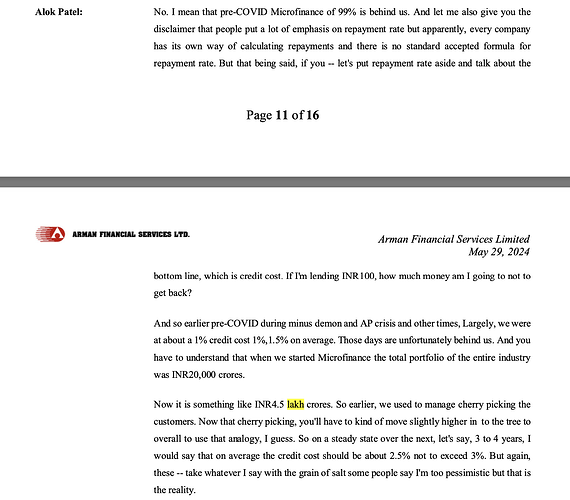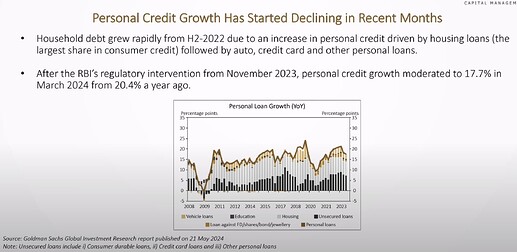hi…i have been invested in arman since 2016-17. what kept building my confidence in the company, the promoters, the management and the team was the way they handled every crisis - demon, ilfs, gst, covid and various other intermittent issues such as floods, elections etc in between.
it seemed as if everytime the company was coming out stronger and better prepared for the next eventuality.
being a high beta play in lending, mfi has always been susceptible to more swings than a normal more diversified lender. but the cross cycle performance of arman has been quite remarkable. and there are not many players who have been able to consistently do this.
it was felt that it was easy to do mfi business and hence many lenders entered the sector. banks took over nbfc-mfi’s thinking it was easy business. moreso after recent rbi relaxations. but many took many missteps and ones like arman and creditaccess who just played it the right way came out stronger, even after getting affected by the same circumstances that afflicted other players.
jlg mfi is more an operations game than a risk game. so consistency, uniformity, simplicity, etc. is the key. ofcourse, it is also important to navigate the risk scenarios, which come in spikes. but how one manages the business during “normal” times is what sets it up to weather the next crisis.
i cannot suggest or recommend, but arman probably looks like it is very near the cheapest levels it has quoted.
sentiments are poor right now given rbi glare on unsecured lending, high growth, visible stress in certain pockets. but by and large, the mfi borrowers are of the resilient nature and typically losses are because of inability and not intention.
improvement in rural economy, some self corrective steps taken by the mfi’s (in terms of moderating growth, increasing provisions etc) under guidance of the self regulatory authorities like mfin and sadhan, may give some comfort to rbi.
mfi remains critical for financial inclusion and that is recognised by finance ministry as well as regulators.
someone interested in the company and the sector will just have to wait it out i guess.



